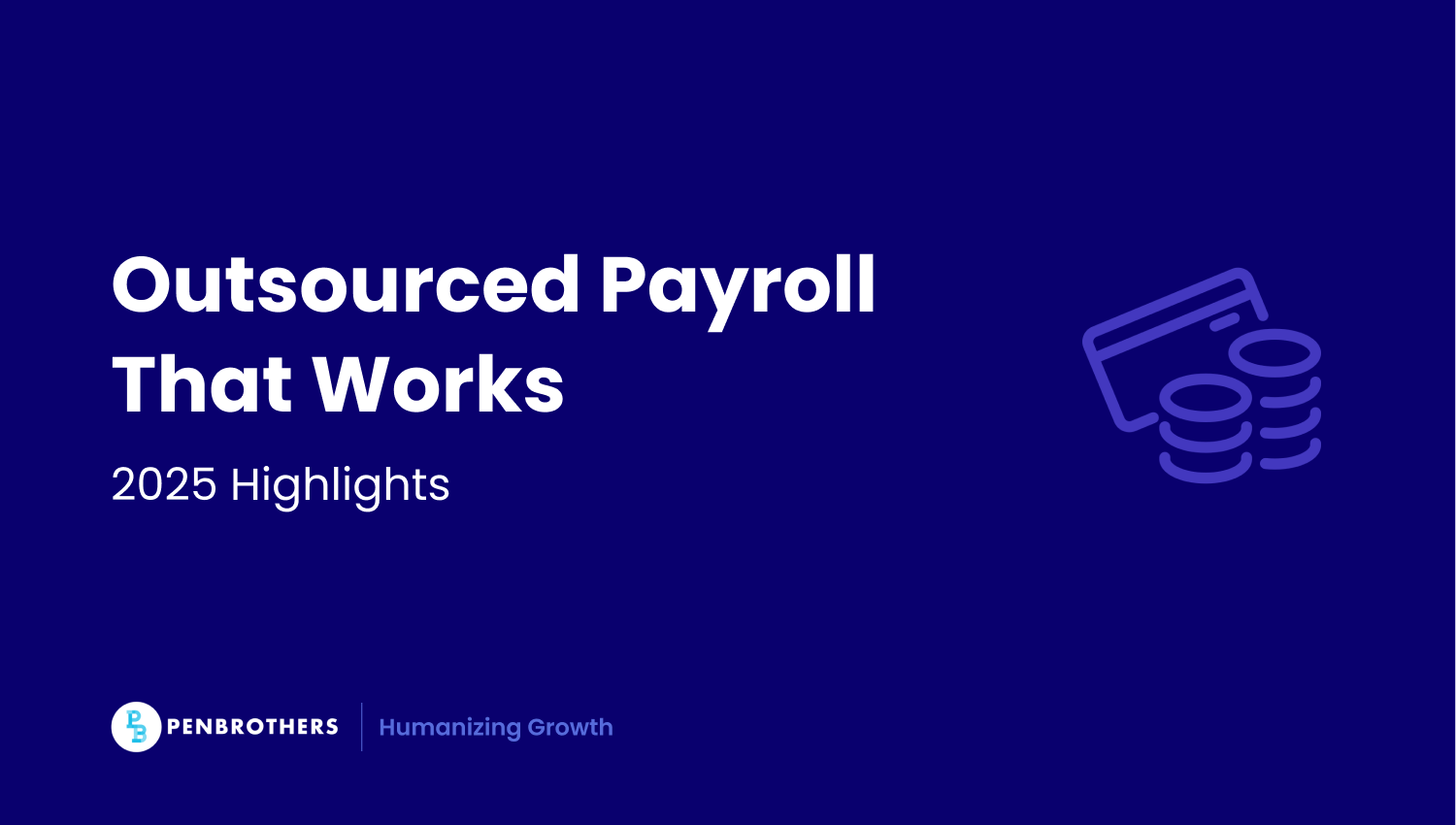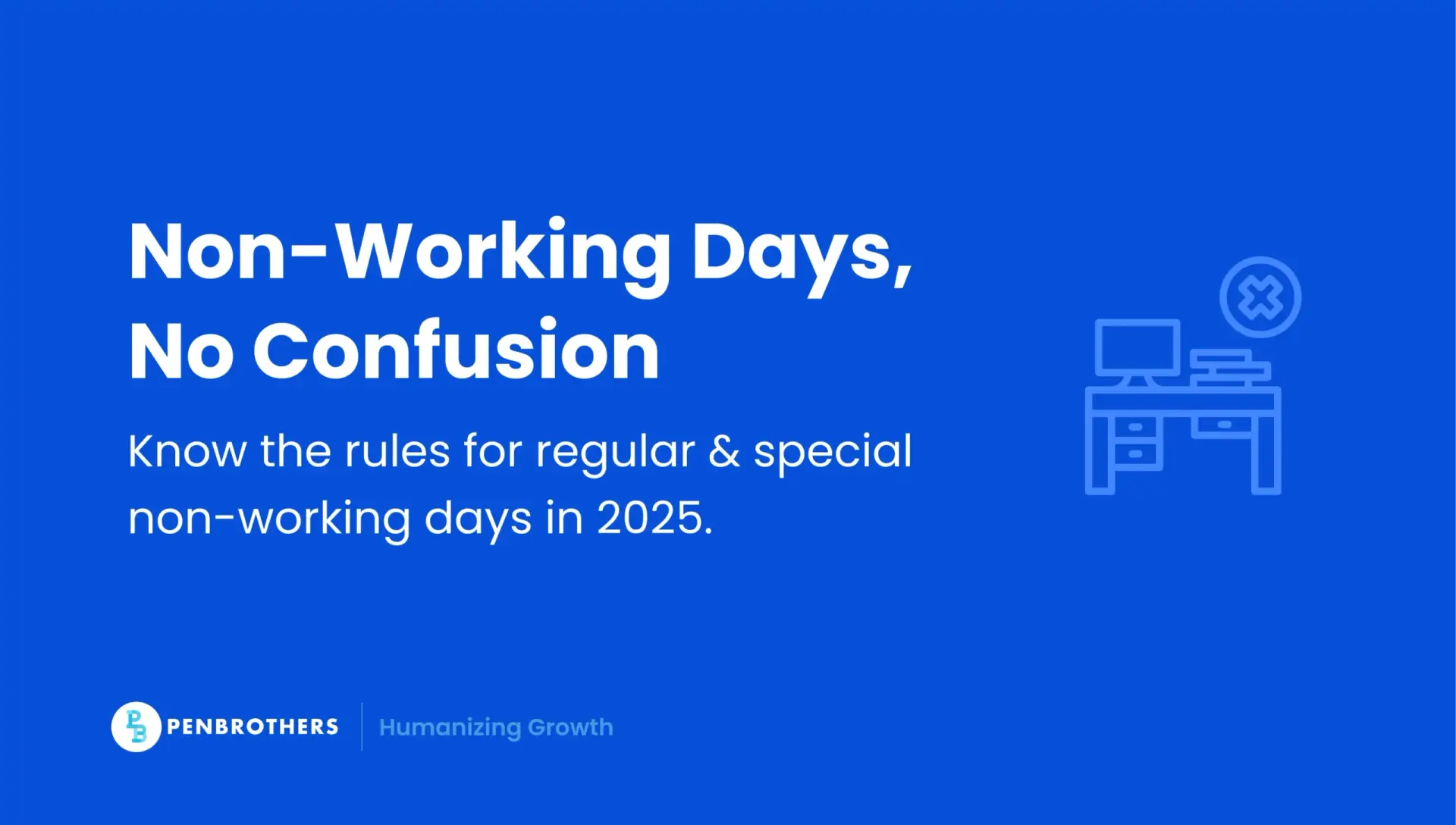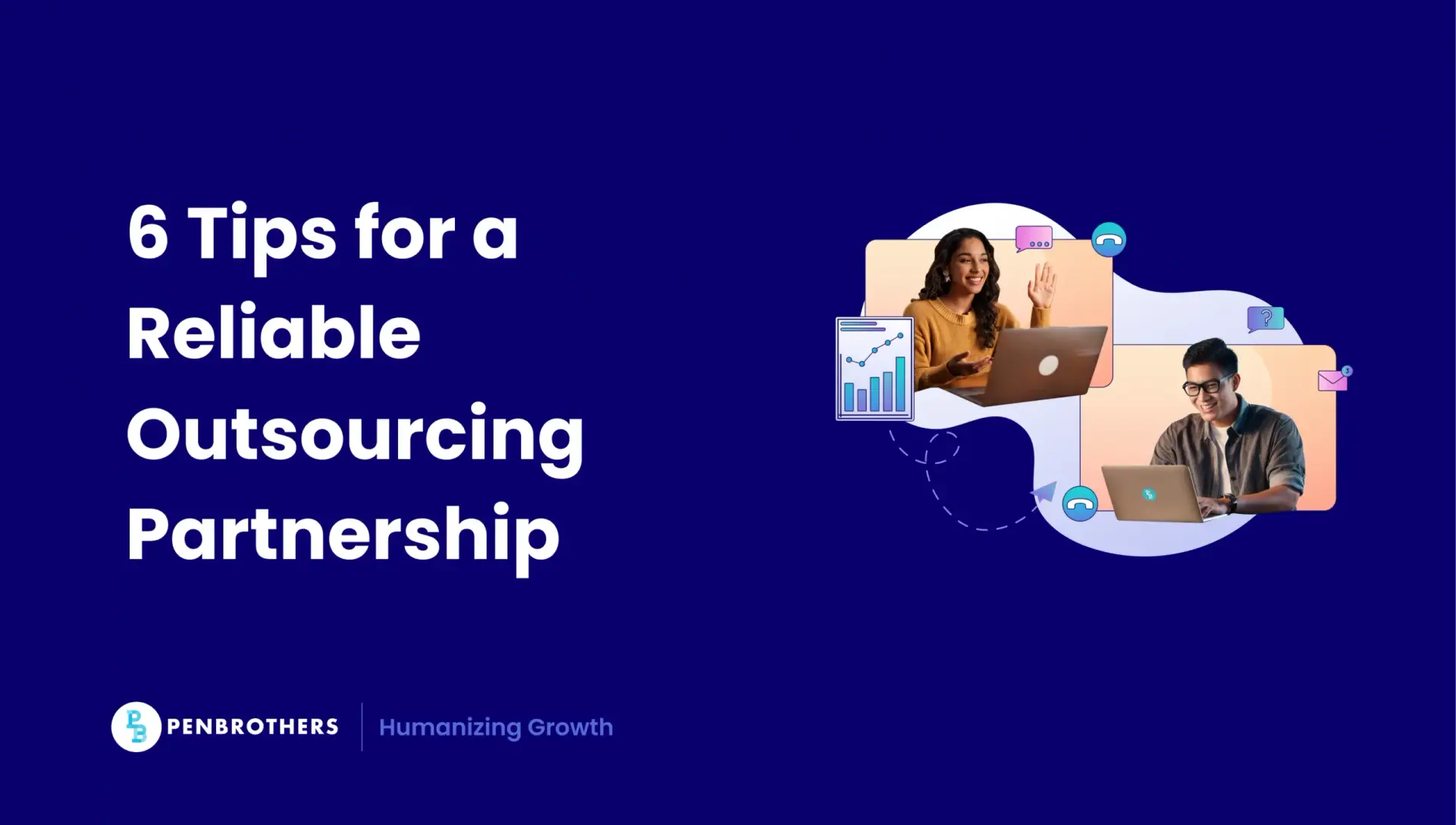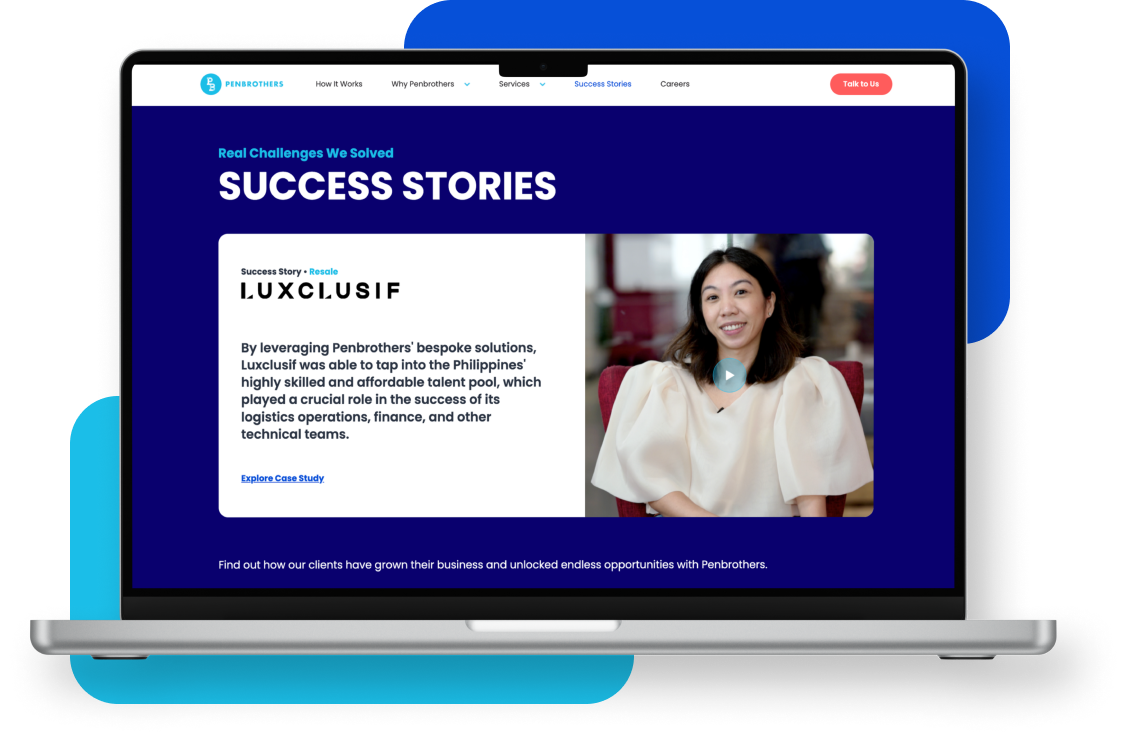What's Inside?
Outsourced HR Services Offshore: Philippines vs. Domestic
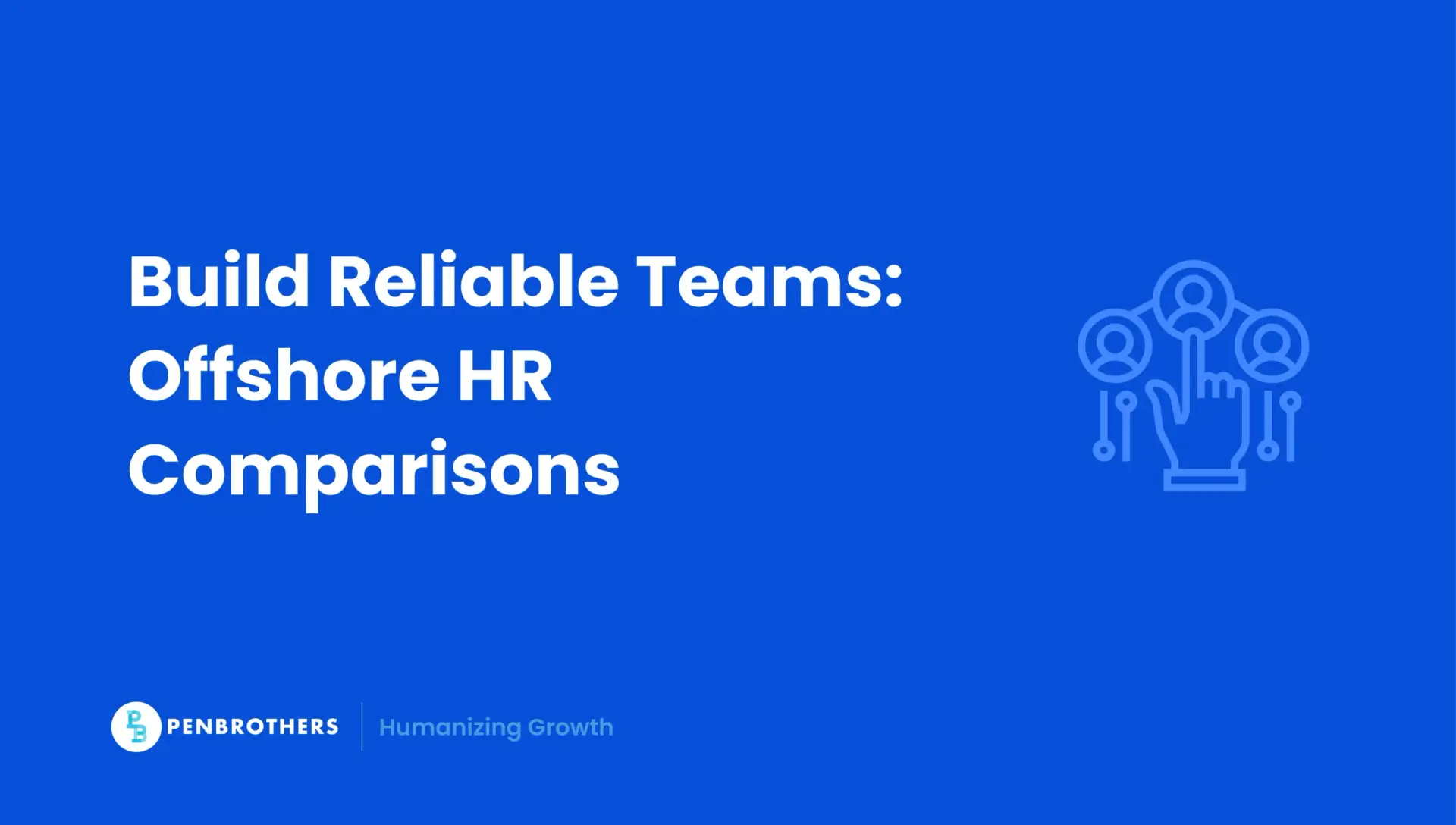
Your HR function is either a competitive advantage or an operational liability. There’s not much middle ground.
Most U.S. startups and SMEs discover this the hard way. Payroll errors that trigger compliance penalties. Benefits administration that consumes executive bandwidth. Recruiting processes that take 60 days when you need people in 30. The VP of HR quits mid-transition, and suddenly the CFO is managing employee handbooks instead of closing the Series B.
The problem isn’t commitment or competence. The problem is capacity. With 71% of employers struggling amid talent shortages, internal HR teams are underwater. They’re handling strategic work and administrative grunt work simultaneously, doing neither particularly well.
Due to fierce competition, outsourced HR services offer U.S. startups and SMEs a path to scalable teams without the domestic chaos. With 74% of employers struggling amid talent shortages, these services delegate HR functions to experts, freeing leaders for revenue growth and strategic positioning.
This guide compares offshore options in the Philippines to domestic providers, highlighting practical implementation, cost savings, and risk mitigation. Whether you’re eyeing payroll streamlining or full talent acquisition, outsourced HR services can deliver ROI if done right.
Key Takeaways
- A Strategic Solution to U.S. Hiring Challenges: Outsourced HR services, particularly offshore, are a strategic solution for U.S. startups and SMEs facing talent shortages, high domestic costs, and complex compliance burdens. The primary benefit has shifted from simple cost-cutting to gaining scalability, expert access, and strategic focus.
- Understanding the Models is a Critical First Step: It is essential to choose the right HR model for your needs. The main options are PEO (co-employment) for bundled U.S. benefits and shared risk, HRO (outsourcing) for delegating specific tasks while remaining the sole employer, and EOR (Employer of Record) for compliantly hiring in a foreign country.
- The Philippines Offers a Clear Advantage Over Domestic Options: Building an HR team in the Philippines offers significant advantages, including 60-70% cost savings compared to U.S. hires, a deep pool of English-proficient talent aligned with Western business culture, and a time zone that overlaps with the U.S. West Coast for real-time collaboration.
- Success Depends on a Structured Onboarding Framework: The highest risk in offshoring is not a lack of talent, but a failure in the first 90 days due to poor onboarding. A structured integration plan, like the 180-day “Hypercare Framework,” is critical to ensure alignment, accelerate productivity, and achieve high long-term retention rates.
What Is HR Outsourcing Services?
Outsourced HR services involve delegating human resources functions to external providers, allowing businesses to focus on core operations while experts handle the rest. This can range from basic administrative support to comprehensive strategic partnerships.
The concept is straightforward. You hand over pieces of your HR operation to people who do nothing but HR. They process payroll. They manage benefits enrollment. They handle compliance paperwork that would otherwise consume your internal team’s bandwidth.
Key Models of HR Outsourcing
Several models exist to suit different needs:
Professional Employer Organization (PEO): This involves co-employment, where the provider shares liability for compliance and benefits. Think of it as splitting the employer responsibilities. You still manage day-to-day operations, but the PEO becomes the employer of record for tax and legal purposes. For U.S. businesses seeking robust risk mitigation, this model offers real protection against compliance mistakes.
Administrative Services Organization (ASO): This one concentrates on administrative tasks like payroll without co-employment. You maintain full legal employer status. The ASO just handles the paperwork. It provides flexibility for companies that want to keep some HR control in-house while outsourcing the tedious parts.
Human Resources Outsourcing (HRO): An umbrella term for full or partial services, from recruitment to performance management. Post-COVID, there’s been particular emphasis on remote and hybrid support as companies realized their HR infrastructure wasn’t built for distributed teams.
Pros and Cons for U.S. Businesses
The upside is clear. Access to specialized expertise you’d never afford full-time. Cost reductions, with many small businesses reporting a 20-40% savings range. The ability to scale without hiring an entire HR department.
The downside exists, too. Reduced internal control. Potential integration challenges when your systems don’t talk to theirs. The learning curve of working with an external team that doesn’t sit in your office.
AI integration is evolving outsourced HR services rapidly. A 2024 Deloitte survey found that 87% of HR leaders plan to adopt AI as part of their outsourced services, using technology to ensure compliance with regulations like FLSA and ACA. The technology handles the repetitive work while humans make the judgment calls.
Why Outsource HR Services Globally?
Outsourcing HR services globally is a strategic move for growth, not merely a cost-cutting tactic. With more and more U.S. companies outsourcing for scalability amid shortages, it addresses practical needs for competitive advantage.
A senior HR specialist in San Francisco costs $95,000 annually plus benefits. That same role in Manila costs $24,000 to $60,000, with comparable expertise and better availability during your business hours if you’re on the West Coast.
But cost is just the entry point.
Top Reasons for Outsourcing
The real drivers are more nuanced:
Cost reduction is a key benefit, with some firms reporting 20-40% savings, yes. But talent access now matters more than the price tag. You’re tapping global pools amid worldwide skills gaps. Good luck finding someone who can process multi-state payroll and implement HRIS systems on short notice in Des Moines.
Compliance and risk mitigation avoid penalties under complex U.S. laws. The costs of a wage and hour lawsuit settlement could run up to $125,000. One mistake wipes out a year of cost savings. Outsourced providers specialize in staying current with regulations you didn’t know existed.
Core business focus is the hidden benefit. When most organizations outsource at least one HR function, they’re buying back executive attention. Your CFO stops debugging benefits administration at 3 AM and starts working on the Series B.
Scalability supports expansion in a market projected to reach $450 billion by 2025. You can add 15 people next quarter without hiring an HR manager first.
Global vs. Domestic Benefits
Offshore advantages crystallize with 60-70% savings, English proficiency, and time zone overlap for U.S. West Coast firms. This delivers 191% ROI while tackling U.S. challenges like talent shortages and capacity overload among leaders.
The Philippines specifically offers a workforce educated in American business practices, culturally aligned with Western workplace norms, and experienced in serving U.S. clients across industries. Manila operates in a time zone that overlaps with U.S. afternoons, meaning real-time collaboration rather than asynchronous email chains.
Risks and Mitigation Strategies
Common pitfalls include poor onboarding and cultural gaps. A hire that looks perfect on paper struggles because no one explained how your performance review system actually works. Or communication breaks down because “urgent” means different things in different contexts.
Practical implementation through structured frameworks ensures competitive edge and opportunity enablement. The key is treating offshore teams as extensions of your company, not as vendors you interact with through tickets and SLAs.
What HR Services Can Be Outsourced Offshore?
Many HR services can be outsourced offshore, particularly those benefiting from cost-effective, skilled talent pools like the Philippines. Think of them in two categories: core administrative work and strategic HR functions. Payroll and recruitment top the list for offshore suitability.
Core Administrative Services
These standardized processes thrive offshore:
Payroll processing and tax compliance. Benefits administration, including health and retirement plans. Time and attendance tracking. Employee records management.
The work is detail-oriented, high-volume, and follows clear procedures. Perfect for teams trained to execute consistently. Philippine efficiency makes these seamless, reducing operational disruptions that happen when your internal person calls in sick during a pay period.
Strategic HR Functions
You can also leverage offshore talent for higher-impact areas:
Talent acquisition and recruitment. Onboarding and training. Performance management and reviews. Employee relations and engagement.
The Philippines’ talent pool can reduce time-to-hire to as little as 30 days. Recruiters there spend their days sourcing candidates, not splitting time between recruiting and handling compliance paperwork. They specialize. They get better at it.
Offshore Suitability and Limitations
The model works best for remote functions like recruiting, where physical presence doesn’t matter. It works less well for highly localized compliance that requires deep knowledge of specific state regulations, though even this is changing as providers build U.S.-specific expertise.
Monthly Costs: Offshore Savings Breakdown
How much do outsourced HR services cost per month? U.S. benchmarks range from $45 to $1,500 per employee, influenced by company size and services selected.
The pricing structure varies widely based on what you’re buying.
Cost Factors and Benchmarks
Basic packages start around $50–100 per employee for ASO arrangements covering payroll and basic admin. PEO models run 4–8% of total payroll, which typically translates to a flat fee of $150 to $300 per employee per month for comprehensive packages. Full HRO exceeds $1,500 per employee monthly for comprehensive packages that handle everything from recruiting to performance management.
Domestic vs. Offshore Cost Comparison
| Service Type | U.S. Domestic Cost (Per Employee/Month) | Philippines Offshore Cost (Per Employee/Month) | Savings Percentage |
| Basic Payroll & Admin | $50–$100 | $20–$50 | 50–60% |
| Full HR Outsourcing (ASO/PEO) | $200–$1,500 | $100–$500 | 60–70% |
| Recruitment & Talent Acquisition | ~$4,700 (per hire) | $500–$1,000 (per hire) | 78–89% |
| Comprehensive (Including Benefits) | $1,500–$3,000 | $500–$1,000 | 60–70% |
A U.S.-based customer service agent typically costs $45,000–$55,000 per year (approx. $3,750-$4,580/month). In the Philippines, comparable talent may range from $10,000–$18,000 annually (approx. $833-$1,500/month).
Calculating ROI for Your Business
Consider a 50-person company spending $5,000 monthly on an internal HR coordinator who’s perpetually behind. Offshore that role for $2,500 and add a senior specialist for another $3,000. You’re spending $5,500 but getting two people instead of one, plus you’re no longer paying overtime or dealing with single-point-of-failure risk.
This typically translates to 70% offshore reductions and an average 191% ROI when you factor in error reduction, compliance risk mitigation, and executive time saved. The catch is transparency. Look for providers with clear pricing and no hidden fees.
Domestic Providers vs. Philippine Talent
Domestic providers like ADP, Insperity, and TriNet offer strong compliance (rated 3.8-4.3 on G2), but offshore in the Philippines provides cost efficiency and cultural fit for scalable growth.
Top Domestic U.S. Providers
ADP: The giant. Excels in analytics and compliance. Pros include deep expertise and comprehensive platforms. Cons include add-on costs that creep up and complexity that can overwhelm smaller teams.
Insperity: Known for strong support and proactive service. Pros include dedicated account management. Cons include limited global capabilities and higher costs for companies with international operations.
TriNet: Automation-focused with strong compliance tools. Pros include technological sophistication. Cons include bundled services that work better for larger firms than startups.
These providers are excellent at what they do. They just cost more and operate within the constraints of the U.S. labor market.
Advantages of Philippines Offshore Talent
The benefits are structural. 60-70% cost savings compared to domestic hires. English-fluent professionals educated in systems designed for American business. Time zone overlap that enables afternoon calls and real-time problem-solving.
This directly addresses scaling pains from U.S. talent shortages. You’re not competing with Google and Amazon for the same HR manager in Austin. You’re accessing a different talent pool entirely.
When to Choose Domestic vs. Offshore
Choose domestic for strict local compliance work that requires physical presence or deep knowledge of specific state regulations. Choose offshore for growth and ROI when you need to scale quickly without proportional cost increases.
The reality is that most companies end up with hybrid models. Domestic leadership with offshore execution. Strategic planning in-house with operational work offshore. Penbrothers bridges this gap with reliability-focused support that makes the hybrid model actually work.
Hypercare: Building Teams That Last
Penbrothers’ Hypercare Framework differentiates outsourced HR services by reducing failure risks and ensuring integration and performance over 180 days.
Most offshore relationships fail in the first 90 days. Not because of talent quality. Because of onboarding negligence.
You hire someone skilled. You give them access to your systems. You expect results. Then three months later, you’re wondering why nothing’s working and you’re back to doing everything yourself.
The 180-Day Hypercare Journey
Penbrothers structures onboarding in three phases:
Phase 1: Foundation. Role setup, weekly check-ins, and workflow alignment. This is when you’re establishing how things actually get done, not how you think they get done. The offshore team member learns your systems, your terminology, your unwritten rules.
Phase 2: Performance. Bi-weekly reviews and optimization. The training wheels come off gradually. You’re measuring actual output against expectations and adjusting where needed.
Phase 3: Autonomy. Monthly reviews and career planning. The team member is now functioning independently, taking initiative, suggesting improvements.
Measurable Business Impact
The outcomes are quantifiable. 2x faster ramp-up compared to typical offshore arrangements. 95% retention after one year versus industry averages around 70%. 20-30% efficiency gains as processes get refined.
Take Servantex, a U.S.-based workforce management firm. They were scaling operations and facing significant internal strain. They needed cost-efficient support for payroll, billing, HR, collections, and compliance management. The problem wasn’t finding tasks to outsource. The problem was making outsourcing actually work.
They started with one role. An Accounting Specialist. Penbrothers handled the full scope of recruitment, onboarding, and ongoing support. The role worked. So, Servantex expanded to Service Center Specialists and a CRM Administrator.
The transformation was operational, not aspirational. Servantex improved operational support and enabled 24-hour business coverage. They achieved an average saving of 69% per role. Their in-house team offloaded key administrative tasks and focused on core business growth.
The difference was execution. Penbrothers managed payroll, tax, compliance, and benefits in the Philippines. Servantex managed strategy and client relationships in the U.S.. Each side did what it does best.
In conclusion, outsourced HR services offshore, particularly from the Philippines, offer a reliable edge over domestic options. Cost savings, yes. But more importantly: scalability and risk mitigation for U.S. startups trying to grow without proportional increases in administrative overhead.
For deeper insights, explore our HR outsourcing guide.
Ready to build teams that drive revenue growth? Book a discovery call today to map your practical strategy.
Frequently Asked Questions
The main difference is the legal employment relationship and your level of liability:
HRO (Human Resources Outsourcing): You delegate specific HR tasks, but you remain the sole legal employer and retain all risk.
PEO (Professional Employer Organization): You enter a co-employment relationship for your domestic U.S. workforce, sharing employer responsibilities and risks with the provider.
EOR (Employer of Record): The provider becomes the sole legal employer for your team, typically in a foreign country where you do not have a legal entity, assuming all local compliance risks.
The key benefits are cost predictability (converting fixed overhead to a variable expense), compliance risk mitigation (gaining expert help with complex U.S. labor laws), access to specialized expertise and HR technology, and strategic focus (freeing up leadership to work on growth).
The Philippines offers a compelling mix of benefits: a massive cost advantage (60-70% savings), a large and skilled talent pool with high English proficiency, and a strong cultural alignment with U.S. business practices. The time zone also provides excellent overlap for U.S. West Coast companies.
Costs vary by model. In the U.S., a PEO typically costs 4-8% of total payroll or a flat fee of $150-$300 per employee per month. Basic HRO services can be as low as $50-$100 per employee per month. An offshore EOR model is often the most cost-effective for building a team, with savings of 70% or more on total labor costs.
It is a structured 180-day (6-month) onboarding process designed to solve the high failure rate of new offshore hires. It moves an employee through three phases—Foundation, Performance, and Autonomy—using regular check-ins and performance alignment to ensure the new hire is fully integrated and productive, which leads to a much higher long-term retention rate.

